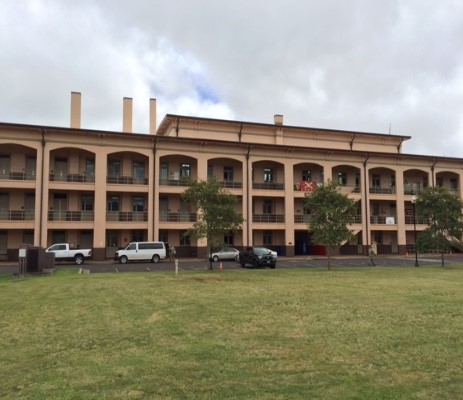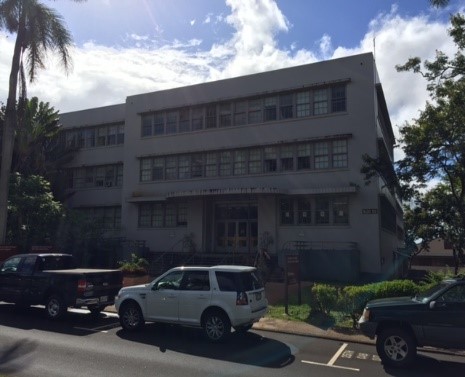
Building 549 on Schofield Barracks uses an estimated $40,449 per month. (Courtesy photo)
Santiago Hernandez
Energy Conservation
Directorate of Public Works
U.S. Army Garrison Hawaii
WHEELER ARMY AIRFIELD, Hawaii -- U. S. Army Garrison Hawaii (USAG-HI) practices energy conservation year round. Energy is too expensive on Hawaii to do otherwise.
Unlike everyone else back on the mainland, we cannot afford to solely practice energy conservation in October. For us, conservation of resources is an annual ongoing process.
October has become a great opportunity to rethink our energy goals, consumption rates, conservation efforts, and relook at our careless habits.
Historically, energy spikes are largely due to hot weather, antiquated buildings, and wasteful habits. However, this year with COVID-19 restrictions, i.e., 14-day quarantines, and working and learning from home, the majority of people have been kept indoors, so consequently energy use is higher than normal.

Building 102 on Schofield Barracks uses $76,474 in energy per month. (Courtesy photo)
The USAG-HI commander is asking that all units, leaders, Soldiers, family members, and civilian workforce take this opportunity to reflect on their current energy practices and set a 10 percent reduction goal for the upcoming fiscal year. How do we get there? We safely remain mission focused, but shut everything off not in use, especially if our staff is working from home or units are deployed. Additionally, use USAG-HI’s simple no cost to low cost energy tips:
- Close all windows and doors for air conditioned spaces. Set thermostats to 74 degrees Fahrenheit for cooled areas (USAG-HI standard).
- Turn off window A/C units in unoccupied rooms. Each unit can cost the Army up to $2,400 for year-round use.
- Turn off lights and HVAC units (window A/C units included) when not in use, particularly during weeknights, weekends, deployments, and holidays. Aircraft hangar lights are included.
- Unit arms room exterior lights should be on at night; however, they should be off during the day.
- Minimize the number of refrigerators and coffee pots – consolidate usage.
- Turn off all office and shop equipment – printers, copiers, computers, battery chargers, and shredders at the end of the day. Also turn them off during work hours when practical.
- Consolidate rear detachments (personnel administrative areas, work areas, etc.) into as few buildings as possible. Use the least amount of living and work space when possible.
- Practice full load washing and drying. Turn off utility lights when not in use.
- Ensure surrounding grounds are watered between the hours of 5 p.m. to 9 a.m. – only water during hours of limited visibility. Sprinklers should be limited to 15 minutes of watering and directed only at green space.
- Submit work orders for broken doors or glass, nonfunctioning A/C controls and equipment, broken light timers/sensors and leaking water fixtures.
- When practical, consolidate trips – carpool. Walk or ride a bike when practical.
- Shutoff vehicles when not in use (GSA TMP/NTV and Tactical Vehicles included).
- An additional top 10 energy saving tips can be located online at https://www.hawaiianelectric.com/save-energy-and-money/household-tips-and-resources.
For those wanting to go the extra mile, calculate your own use and costs. Hawaiian Electric Company (HECO) provides a great tool to “Calculate Energy Consumption.” Go to
HECO makes it easy. Just know the wattage of an appliance, hourly use, and your hourly bill rate. A user-friendly calculator is provided. Just insert your information and the calculator will do the rest.
For HECO hourly rates use https://www.hawaiianelectric.com/billing-and-payment/rates-and-regulations/average-price-of-electricity.
In 2019 the average “Residential” electrical rate on Oahu was 31.04 cents.
Saving energy in Hawaii is a year-round commitment; however, there is nothing wrong with using October as a time to rethink our energy goals, consumption rates, conservation efforts, and relook at our not-so-good habits. Let’s end the year and begin the next by doing and encouraging others to reduce our consumption by 10 percent.
Everyone is responsible for conserving energy. Please pass the word along and let’s start saving today.
Just turn it off when not in use!




